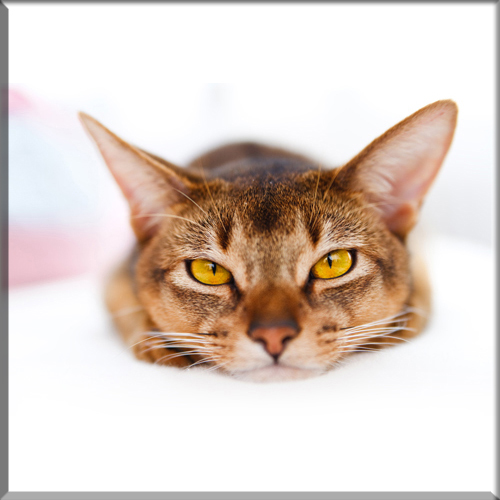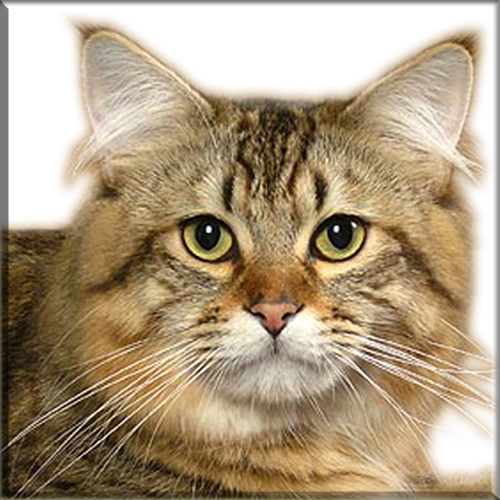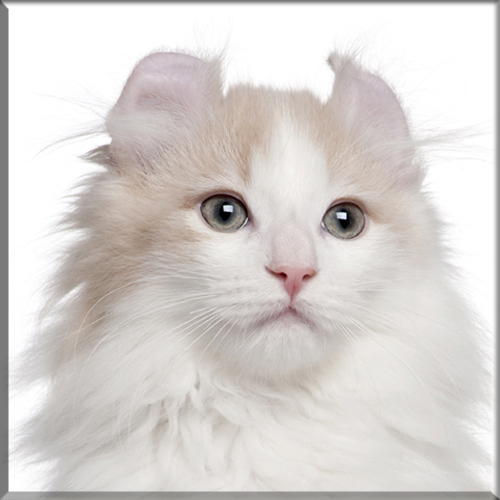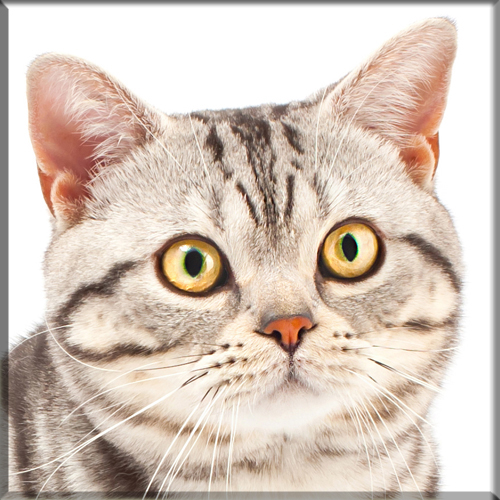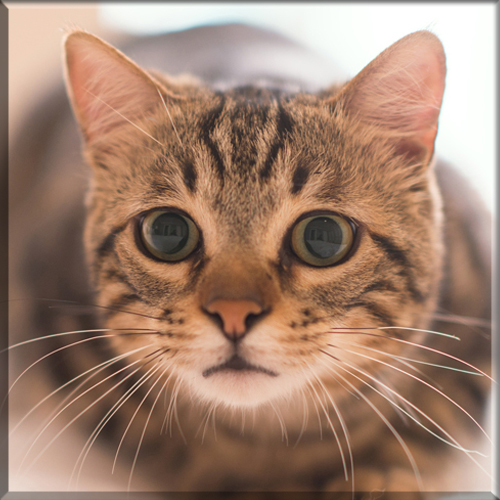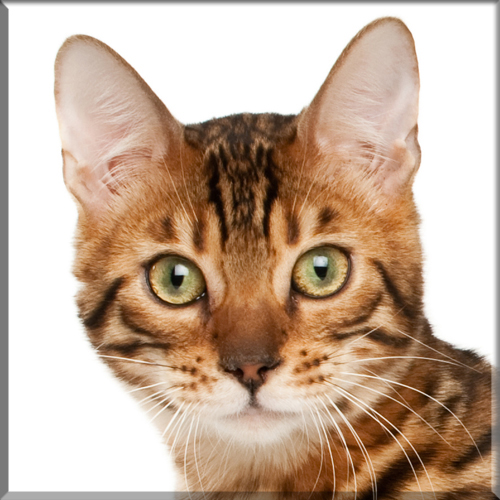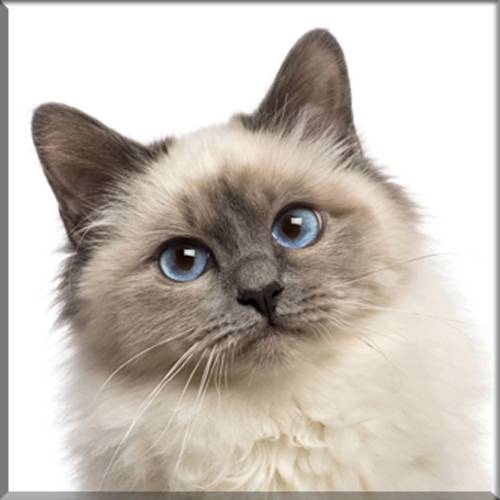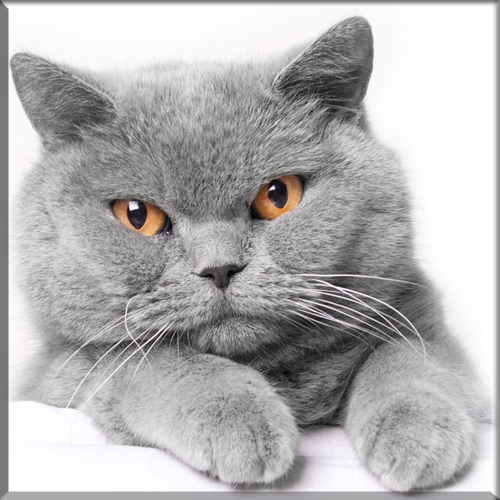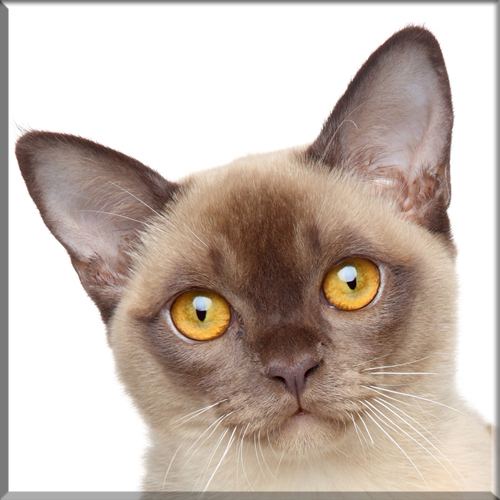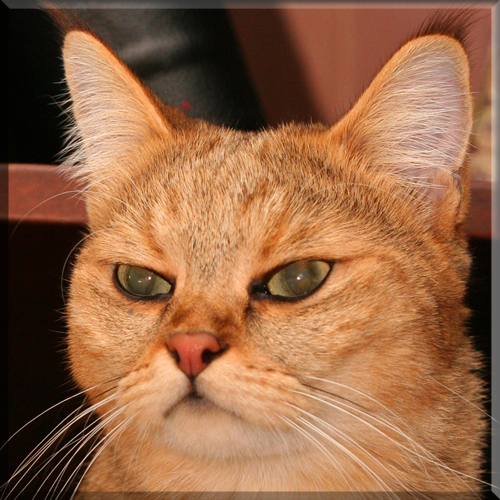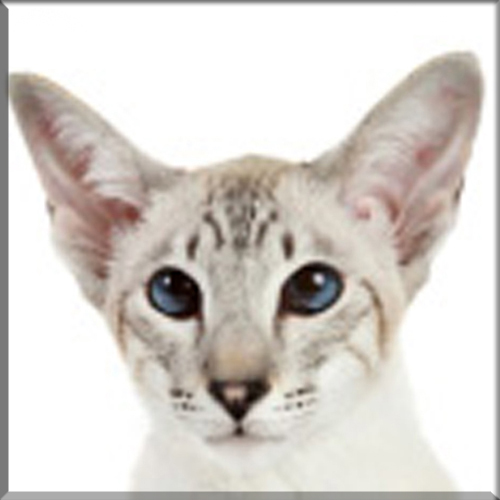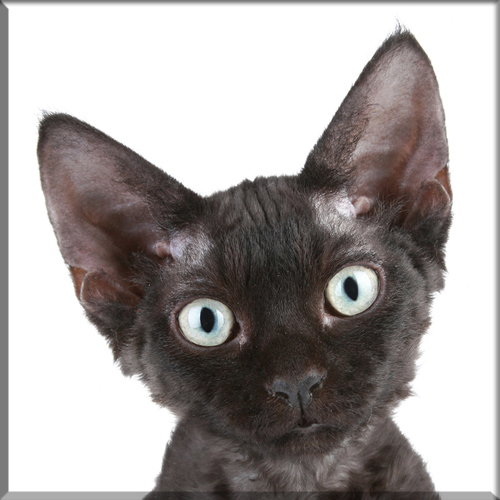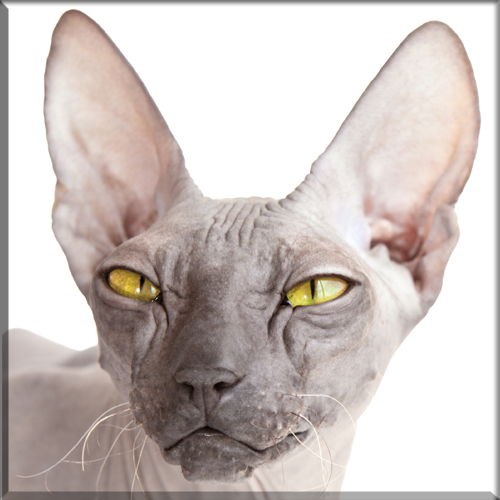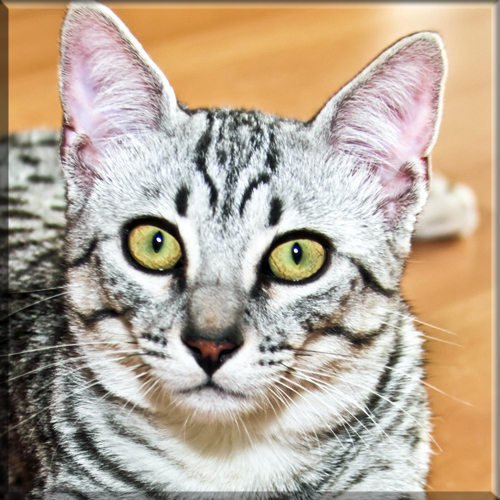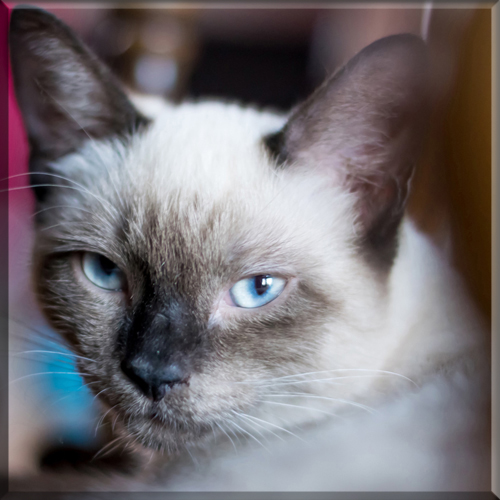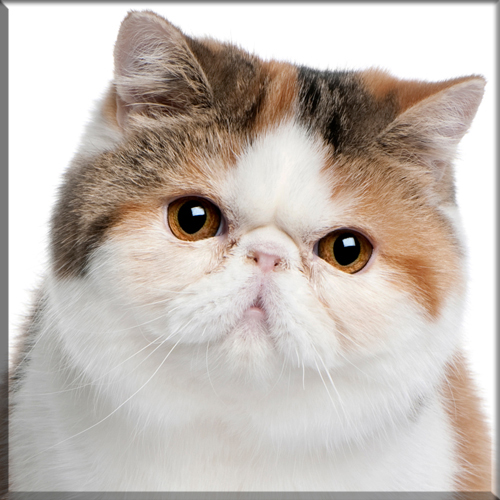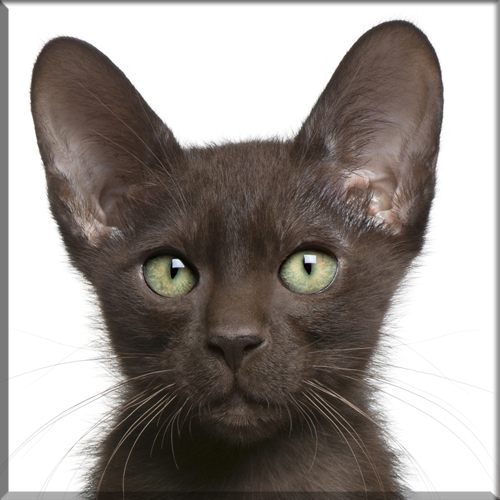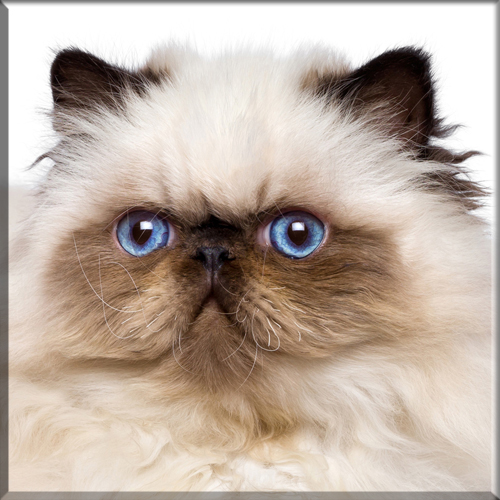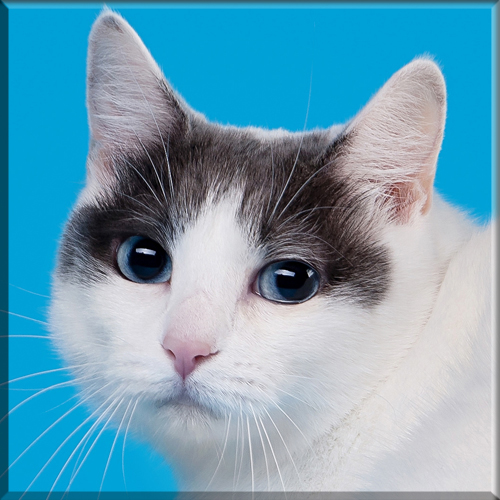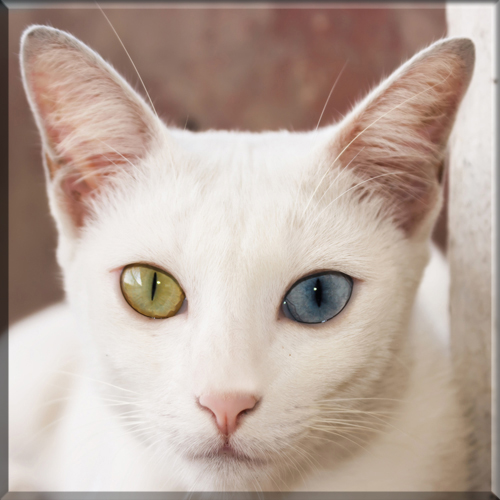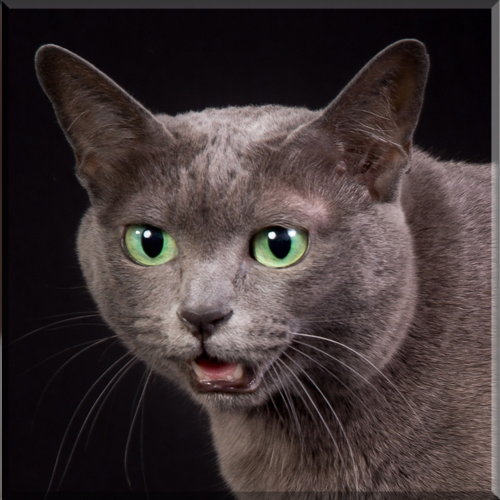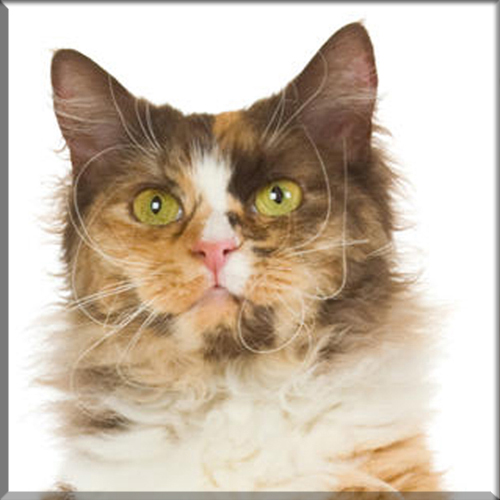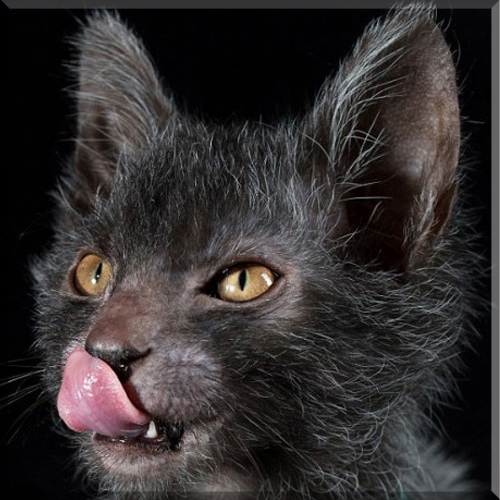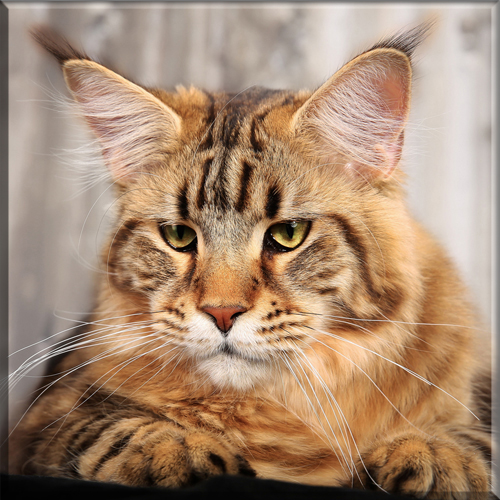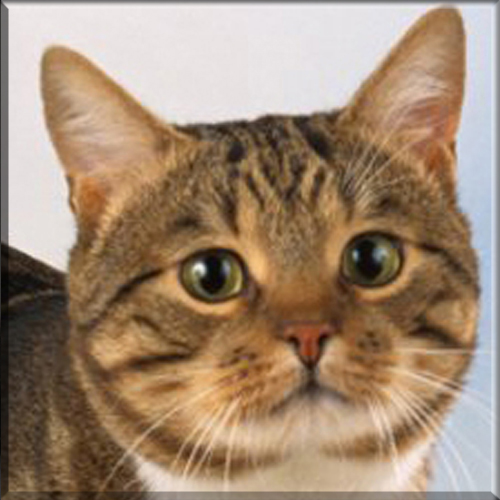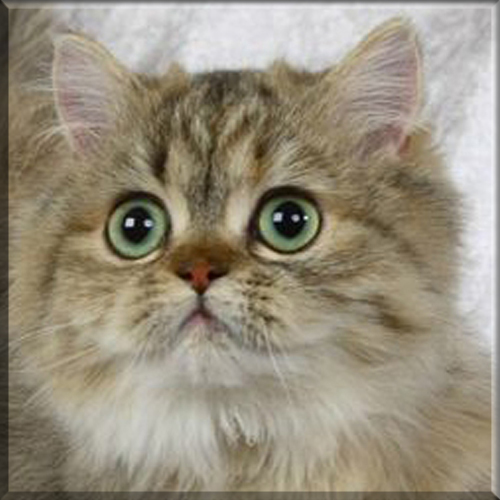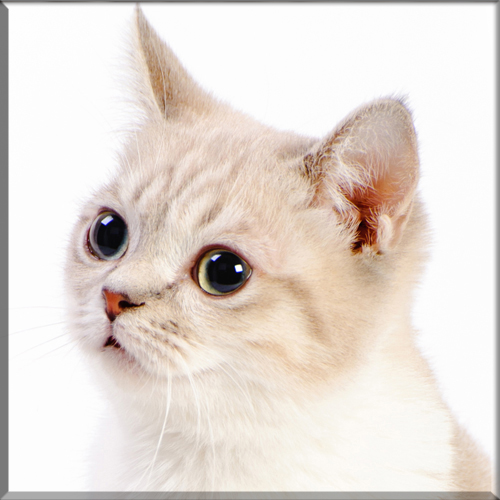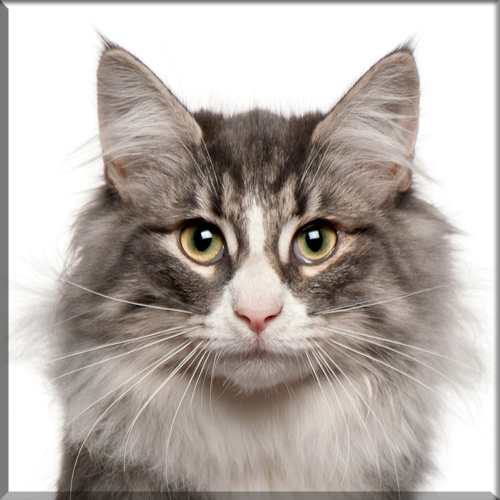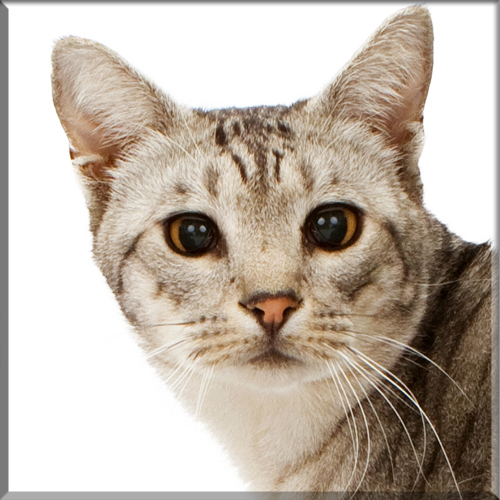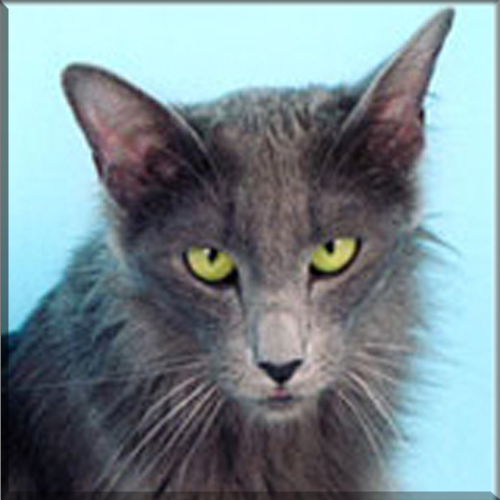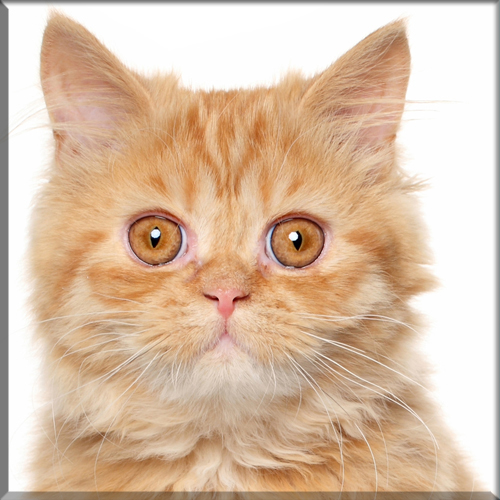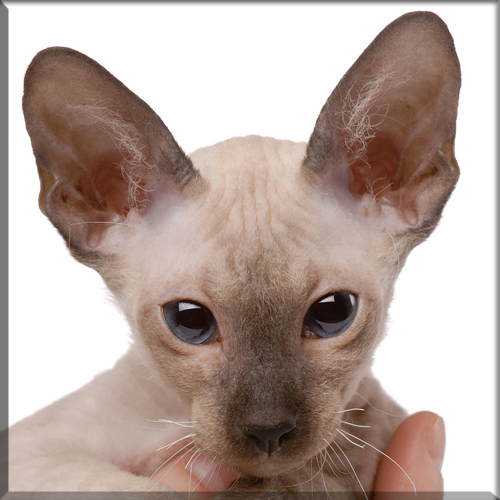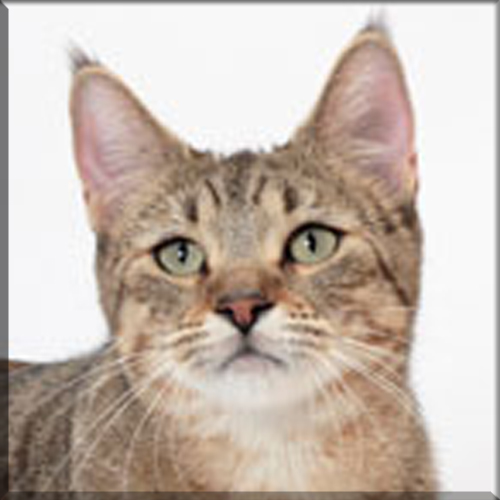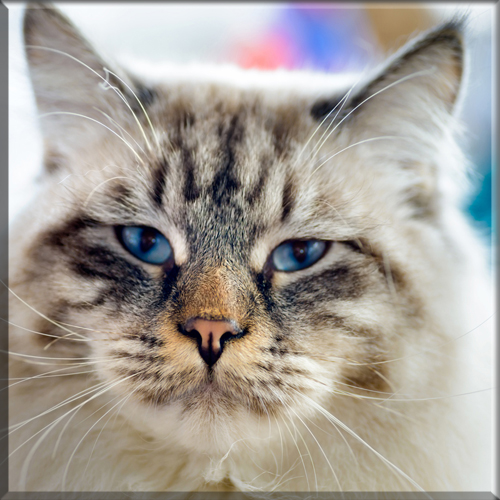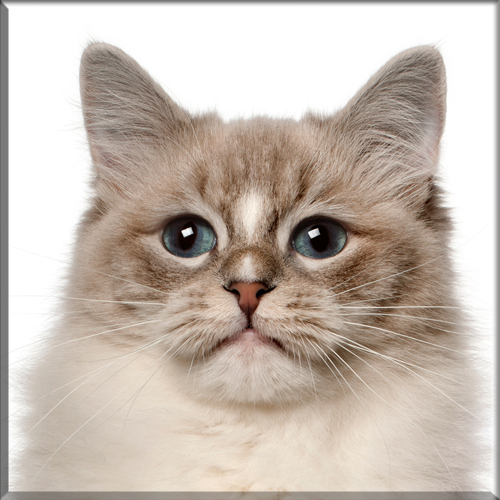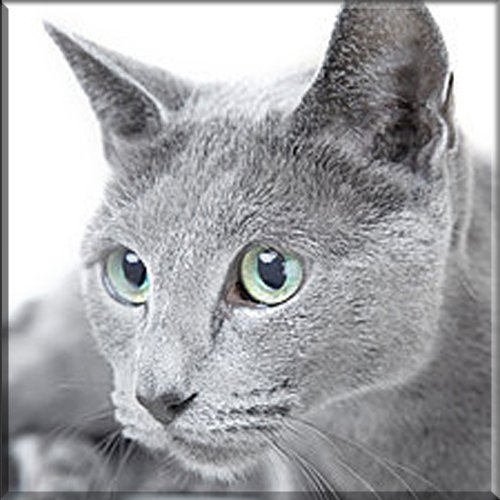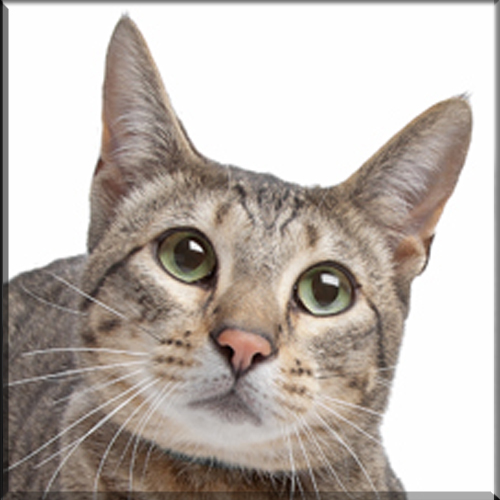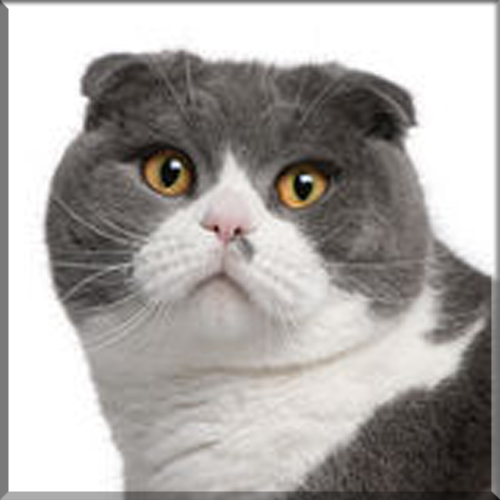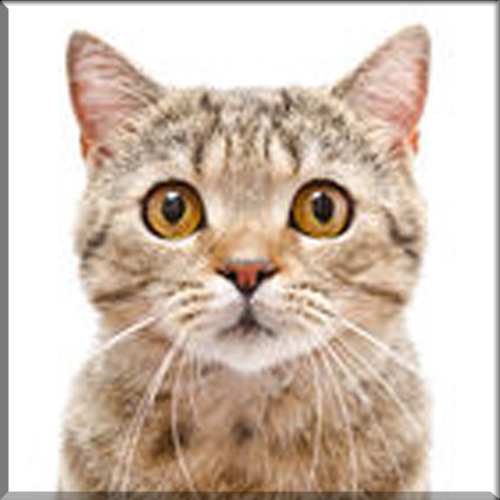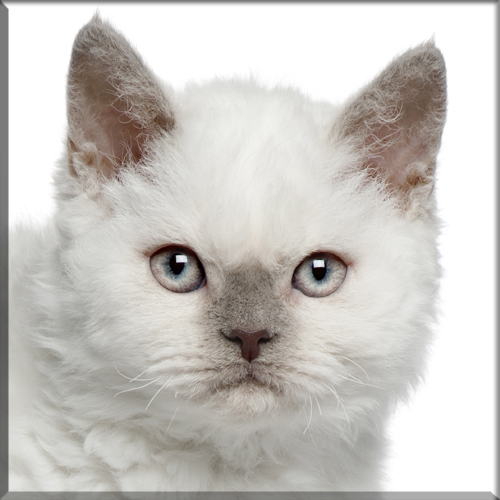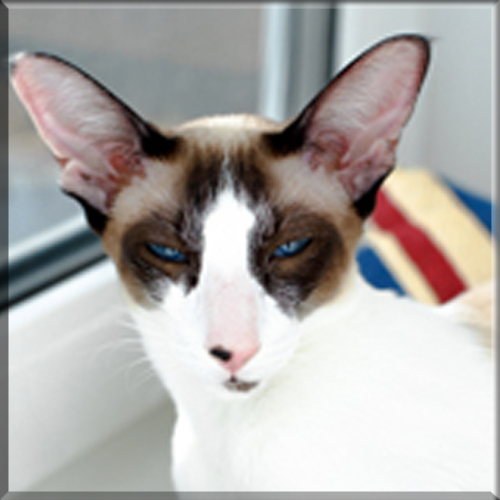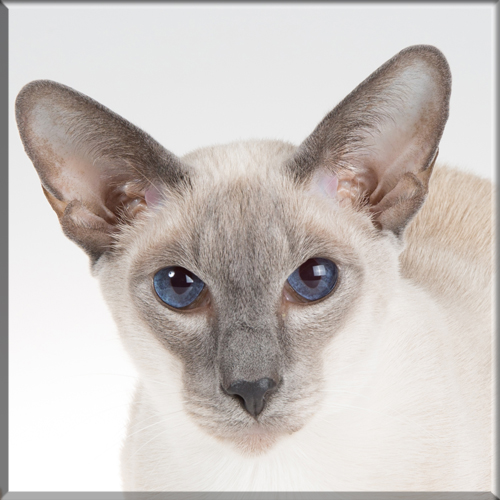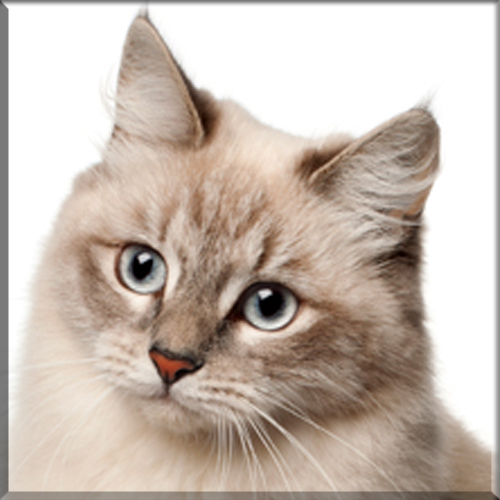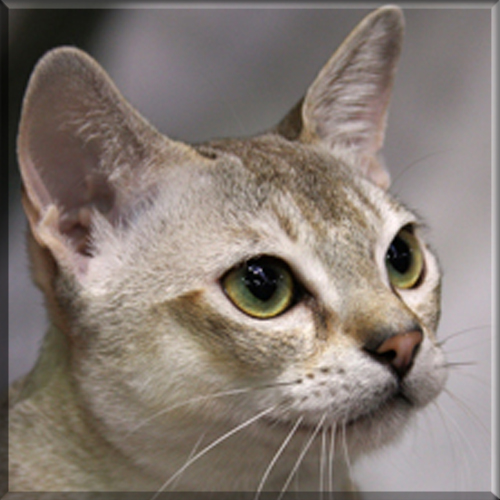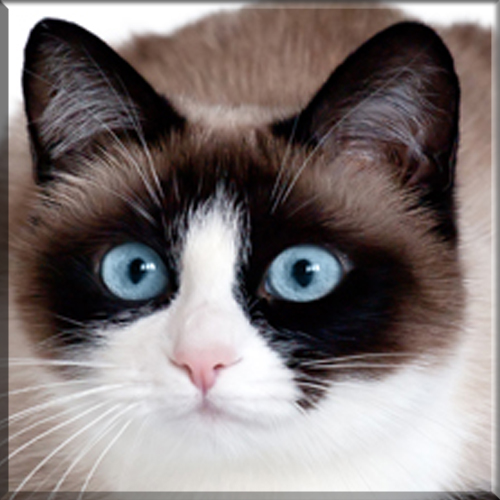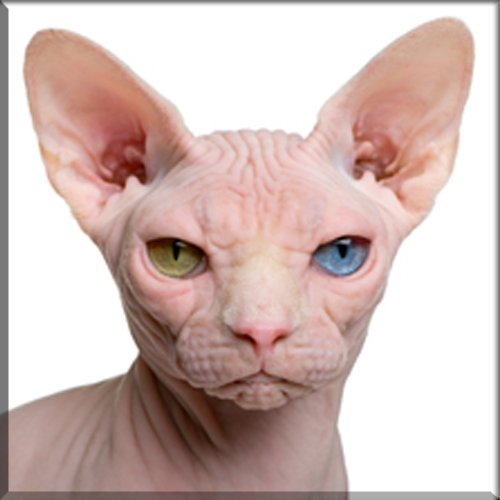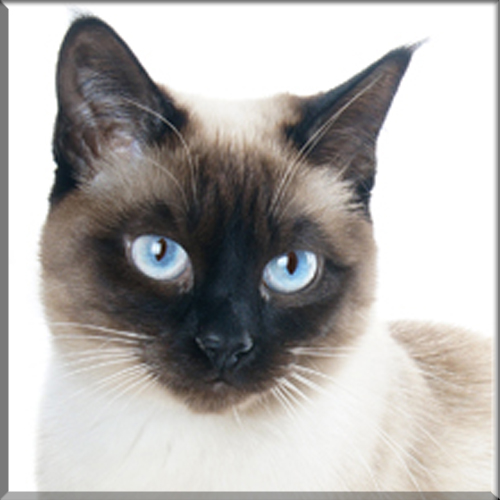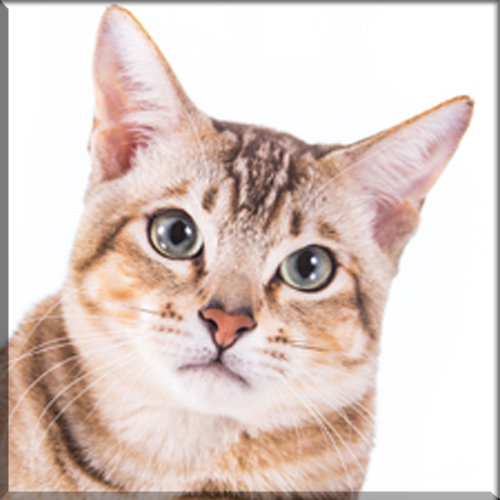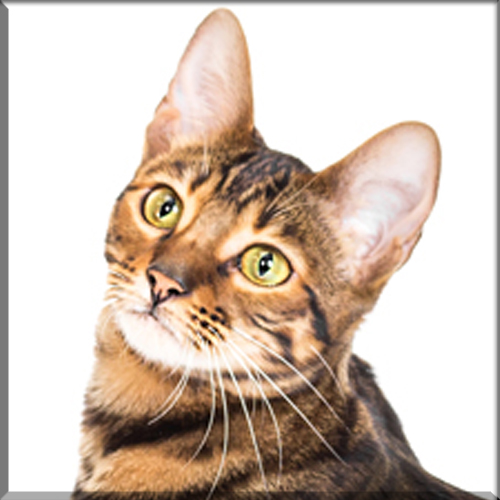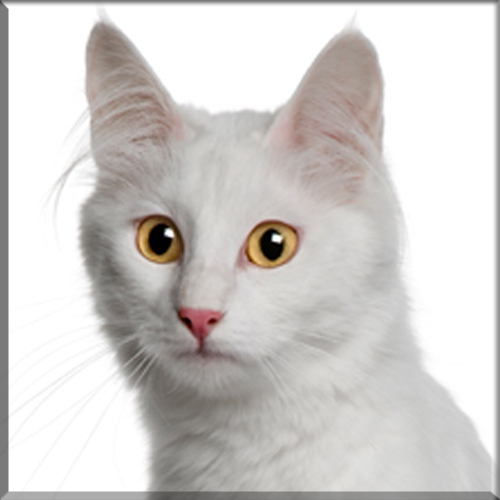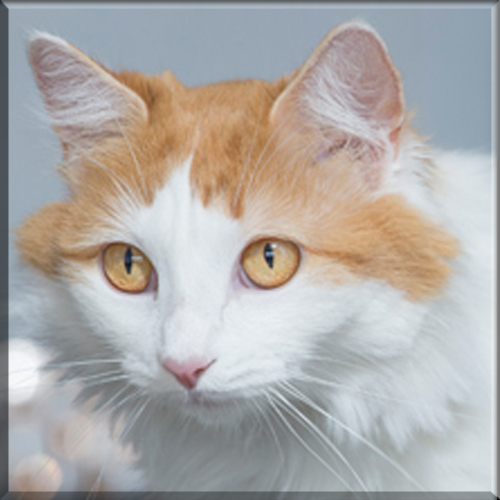Manx

Appearance and features:
The body and legs of a Manx are medium-sized cats, broad-chested with sloping shoulders and flat sides, and in show condition are firmly muscular and lean, neither bulky nor fatty. Lane reported the original, native, naturally occurring pure breed as ranging typically from ten to twelve pounds for males and eight to ten pounds for females, with many smaller examples but only rare ones larger. The hind legs of Manx are notably longer than the fore legs, causing the rump to be higher than the shoulder and creating a continuous arch from shoulders to rump giving the cat an overall rounded or humped appearance, though the breed is comparatively long when stretched out. The fore legs are strong and straight. The shape is often described as rabbit-like.
The head are rounded in shape, and medium in depth with a long neck. The face is often very expressive, with a small nose. The upright, round-tipped and front-facing ears are largish. The eyes are large, rounded and prominent, with their outer corners higher than the inner ones. Absent any bloodlines with a dominant alternative eye color (such as blue in Siamese or related ancestry), Manx often have some hue variant of gold eyes, and for show purposes follow the eye color standards of the same coat color/pattern in non-Manx short-hairs.
Manx cats exhibit two coat lengths. Short- or long-haired, all Manx have a thick, double-layered coat. The color and pattern ranges exhibited should conform to the standards for that type of coat in non-Manx.
The more common short-haired Manx – the original breed – has a coat with a dense, soft, under layer and a longer, coarse outer layer with guard hairs. The overall appearance of the coat is fine, short and lying close to the skin, versus fluffy or voluminous.
Some Manx kittens are naturally born with any tail length, from none to long, it was formerly common to surgically dock the longer tails a few days after birth.
Size:
Family:
Coloring:
Regardless of coat length, the most common coats are tabby, tortoiseshell, calico and solid colors. Widely divergent Manx specimens, including even a color-point, blue-eyed, long-haired variant of evident Himalayan ancestry, have been celebrated on Isle of Man postage stamps since the 1980s, and recent publications often show marbled and spotted varieties.
Origin:
The Manx cat (in earlier times often spelled Manks) is a breed of domestic cat originating on the Isle of Man, with a naturally occurring mutation that shortens the tail. Many Manx have a small stub of a tail, but Manx cats are best known as being entirely tailless; this is the most distinguishing characteristic of the breed, along with elongated hind legs and a rounded head. Manx cats come in all coat colors and patterns, though all-white specimens are rare, and the coat range of the original stock was more limited. Long-haired variants are sometimes considered a separate breed, the Cymric.
Temperament:
Manx are prized as skilled hunters. They are said to be social, tame and active.
Health concerns:
Manx can have Arthritis of the tailbone in cats with partial tails. Coneal dystrophy, cloudiness that begins to develop when a kitten is under 6 months of age, and they can also have a condition which results when the tailless gene shortens the spine too much. It can seriously damage the spinal cord and the nerves, causing a form of spina bifida, as well as problems with the bowels, bladder, and digestion.
Breed Characteristics
Here is a helpful guide for the different characteristics of the breed. On a Scale of 1-5. 1 being very low level to 5 being high level.
Hypoallergenic: No
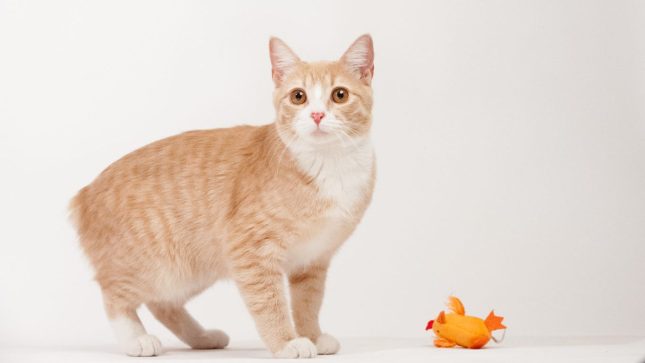
Breeders With Currently Available Kittens
All The Cat Breeds
- Abyssinian
- American Bobtail
- American Curl
- American Shorthair
- American Wirehair
- Balinese
- Bengal
- Birman
- Bombay
- British Shorthair
- Burmese
- Burmillia
- Charteux
- Chausie
- Colorpoint Shorthair
- Cornish Rex
- Devon Rex
- Donskoy
- Egyption Mau
- European Burmese
- Exotic
- Havana Brown
- Highlander
- Himalayan
- Japanese Bobtail
- Khao Manee
- Korat
- LaPerm
- Lykoi
- Maine Coon
- Manx
- Minuet / Napolean
- Munchkin
- Norwegian Forest Cat
- Ocicat
- Oriental Longhair
- Oriental Shorthair
- Persian
- Peterbald
- Pixie Bob
- Ragamuffin
- Ragdoll
- Russian Blue
- Savannah
- Scottish Fold
- Scottish Straight
- Selkirk Rex
- Seychellois
- Siamese
- Siberian
- Singapora
- Snowshoe
- Somali
- Sphynx
- Thai
- Tonkinese
- Toyger
- Turkish Angora
- Turkish Van

